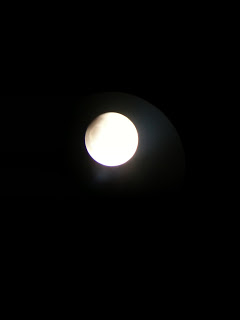Luna quante facce hai nel calendario lunare?
Nel passaggio alle società agricole e stanziali le stagioni dell’anno solare divennero più importanti rispetto a quelle del calendario lunare. Un punto di arrivo di questa fase preistorica si trova nel ruolo del Dio-Luna egiziano Thoth, talvolta raffigurato come un babbuino con la falce di Luna sul capo. Quando Ra, il Dio-Sole, viaggiava nel mondo notturno veniva sostituito da Thoth nel mondo superiore. Thoth governava il calendario e aveva il difficile compito di armonizzare un anno lunare, di 13 mesi ciascuno di 29 giorni e mezzo circa, col ciclo di 365 giorni del Sole. Il problema fu risolto usando l’intercalazione, l’inserimento periodico di un 13° mese lunare.
La Luna era principalmente vista come femmina (Thoth è un’eccezione), e la sua influenza e quasi coincidenza con il ciclo mestruale (dal greco menses “Luna”) l’ha legata alla fertilità alla donna e alla nascita.
Un frequente motivo lunare è quello della Dea “Tripla”, come le tre Parche, o Moire, o maghe.
(continua)
English version
In the transition to agricultural and settling societies, the seasons of the solar year became more important. A point of arrival of this prehistoric phase is found in the role of the Egyptian God-Moon Thoth, sometimes portrayed as a baboon with the crescent of Luna on the head. When Ra, the Sun-God, traveled in the nocturnal world, he was replaced by Thoth in the higher world. Thoth governed the calendar and had the difficult task of harmonizing a lunar year, of 13 months each of about 29 and a half days, with the 365 day cycle of the Sun. The problem was solved by using the intercalation, the periodic insertion of a 13 ° lunar month.
The Moon was primarily seen as a female (Thoth is an exception), and its influence and almost coincidence with the menstrual cycle (from the Greek menses “Moon”) has linked it to the fertility of women and birth.
A frequent lunar motif is that of the “Triple” Goddess, like the three Parcae, or Moire, or maghe.
(continue)
Il video de Dal Mercoledì delle Ceneri alla Pasqua…
Traduzione in latinorun per gioco (by Google Translator)
SEDENTARIUS in ad transitum ad societates et agriculturae et de temporibus anni solaris non est magis. A prehistorico culmen huius tempus enim de talium munus a Deo Aegyptia Luna, aliquando sistantur quam ut plane Nireus videtur cum lunae pleno capite. Cum Ra, Deus, per Solem, in nocte mundi iter successit in talium superius mundi. Et ipse obtineret omnem fastis talium enim est difficile negotium, ex solis consentientibus XIII menses lunares anno XXIX dies et dimidium uterque cum CCCLXV, dies in sole exolvuntur. Quod forsit est solutum per intercalandi est, in XIII de insertione quorundam periodica ° LXXVI.
Lunam maxime visum esset femina (talium est exceptis), et eius potentia et coincidentes cum prope mensis exolvuntur (ex Graeco, fluores menstruos “Luna”) coniunctum est mulier, et peperit fertilitatem.
Lunaris ratio frequens est dea “Tripla” quod tribus Parcis seducit et moire vel denuntiat.
(Continuat)
Photo by Luigi Viazzo with Samsung Galaxy S3
